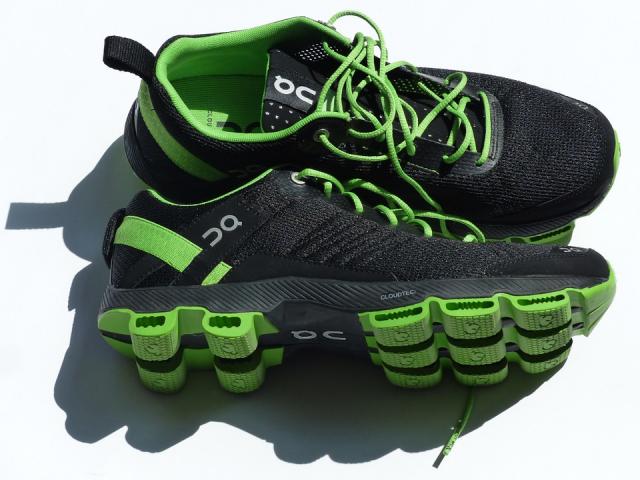Running Shoes
 Picking out the right kind of running shoe may seem overwhelming, but it helps if you already know a little bit about your feet. Do you have low arches/flat feet, or high arches? How much cushion/support do you need? People with certain foot conditions should search for shoes that fit their individual running needs. If you have issues with plantar fasciitis, or experience pain on the heel of your foot, you may need a running shoe with more support in that area. A great way to adjust for arch support is with insoles or orthotic inserts. One should also consider what type of runner you are. Do you run long distances at a slow or jogging pace, or are you more into sprinting or faster, short-distance running? A running shoe for faster runners should include some, but not an excessive amount of cushion. It is more important to find a pair of running shoes that have cushion in the RIGHT places: on the heel, the ball of the foot, and enough around the sides. Making sure you have the right amount of cushion in a running shoe will lower your risk of heel pain, tendonitis, shin splints, stress fractures, and other common injuries related to overuse or inadequate footwear. Walking shoes should have more cushioning to support the feet on impact, and this goes for slower-paced runners/joggers. It is also important to consider what your future goals are with running. If you intend on gaining more and more distance/speed over a few months, you should be aware that you are going to have to change your running shoes. This is not only because your needs will change with the change in your activity, but also because your shoes have a “life” or “mileage” to them; after a certain number of miles are placed on the shoe, they start to wear down. This wearing of the shoes can lead to various other injuries, so keep track of how worn out your shoes are and if they need to be replaced.
Picking out the right kind of running shoe may seem overwhelming, but it helps if you already know a little bit about your feet. Do you have low arches/flat feet, or high arches? How much cushion/support do you need? People with certain foot conditions should search for shoes that fit their individual running needs. If you have issues with plantar fasciitis, or experience pain on the heel of your foot, you may need a running shoe with more support in that area. A great way to adjust for arch support is with insoles or orthotic inserts. One should also consider what type of runner you are. Do you run long distances at a slow or jogging pace, or are you more into sprinting or faster, short-distance running? A running shoe for faster runners should include some, but not an excessive amount of cushion. It is more important to find a pair of running shoes that have cushion in the RIGHT places: on the heel, the ball of the foot, and enough around the sides. Making sure you have the right amount of cushion in a running shoe will lower your risk of heel pain, tendonitis, shin splints, stress fractures, and other common injuries related to overuse or inadequate footwear. Walking shoes should have more cushioning to support the feet on impact, and this goes for slower-paced runners/joggers. It is also important to consider what your future goals are with running. If you intend on gaining more and more distance/speed over a few months, you should be aware that you are going to have to change your running shoes. This is not only because your needs will change with the change in your activity, but also because your shoes have a “life” or “mileage” to them; after a certain number of miles are placed on the shoe, they start to wear down. This wearing of the shoes can lead to various other injuries, so keep track of how worn out your shoes are and if they need to be replaced.

